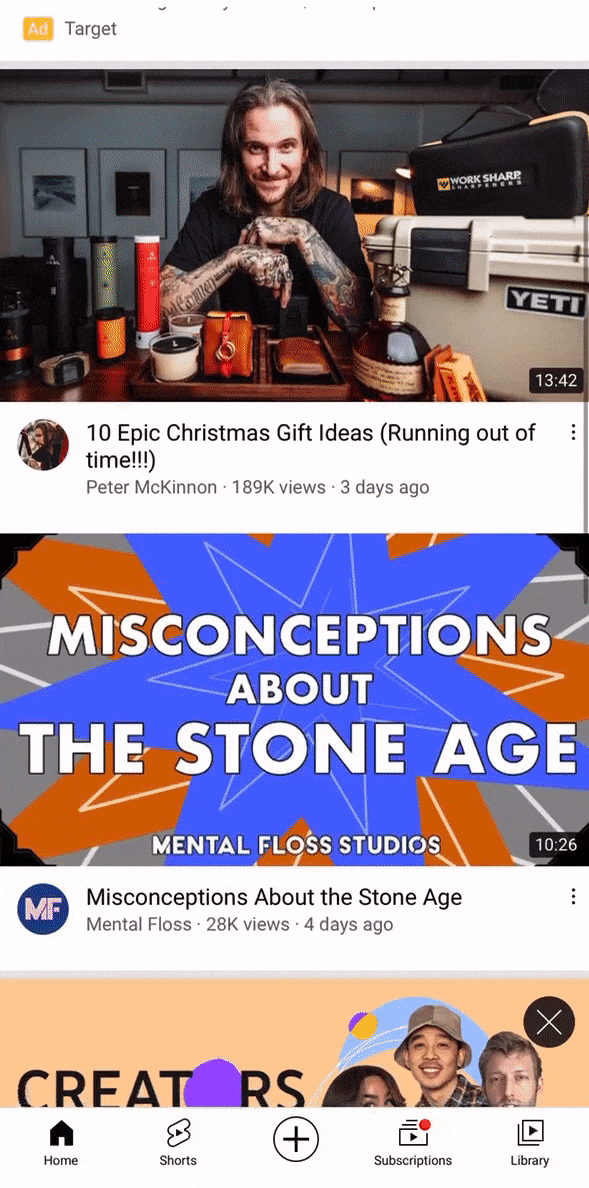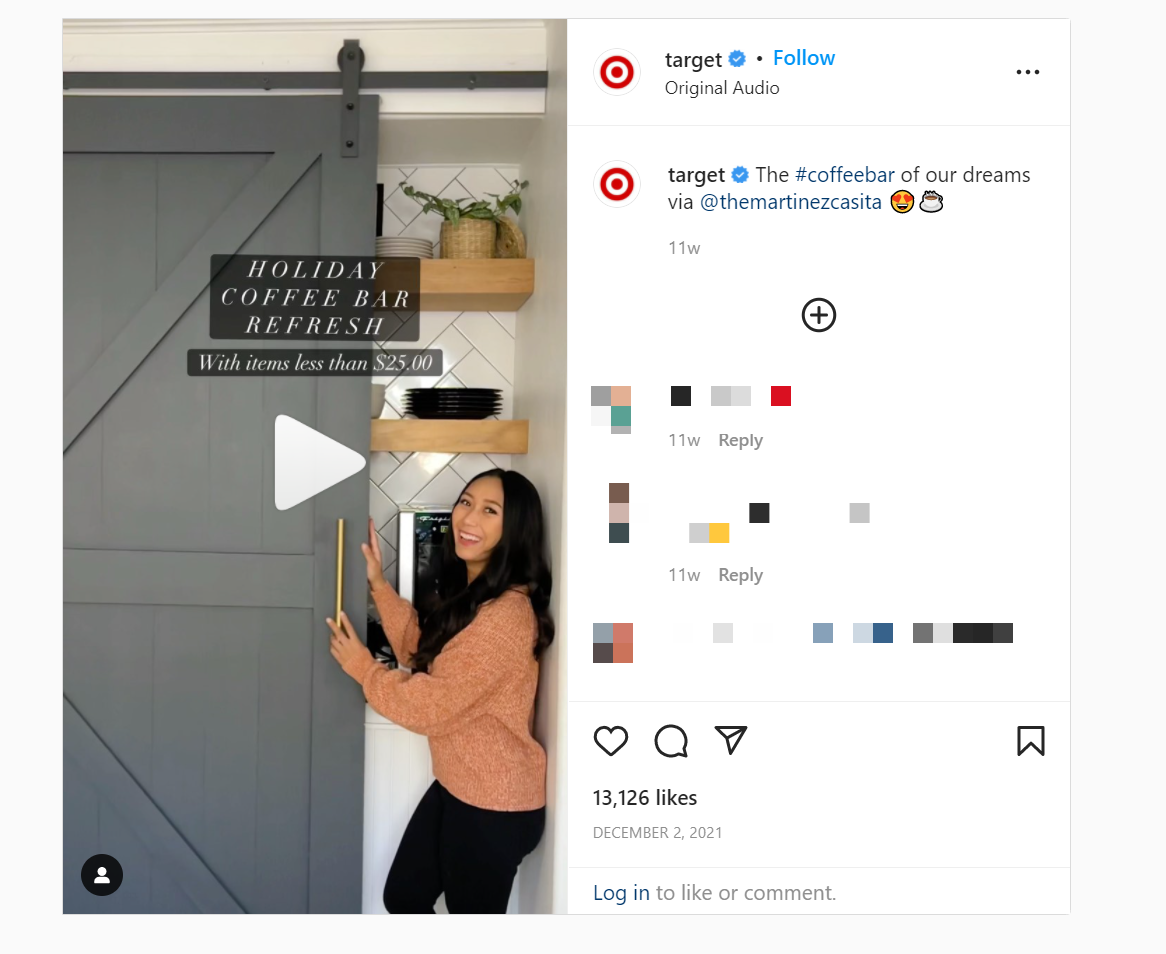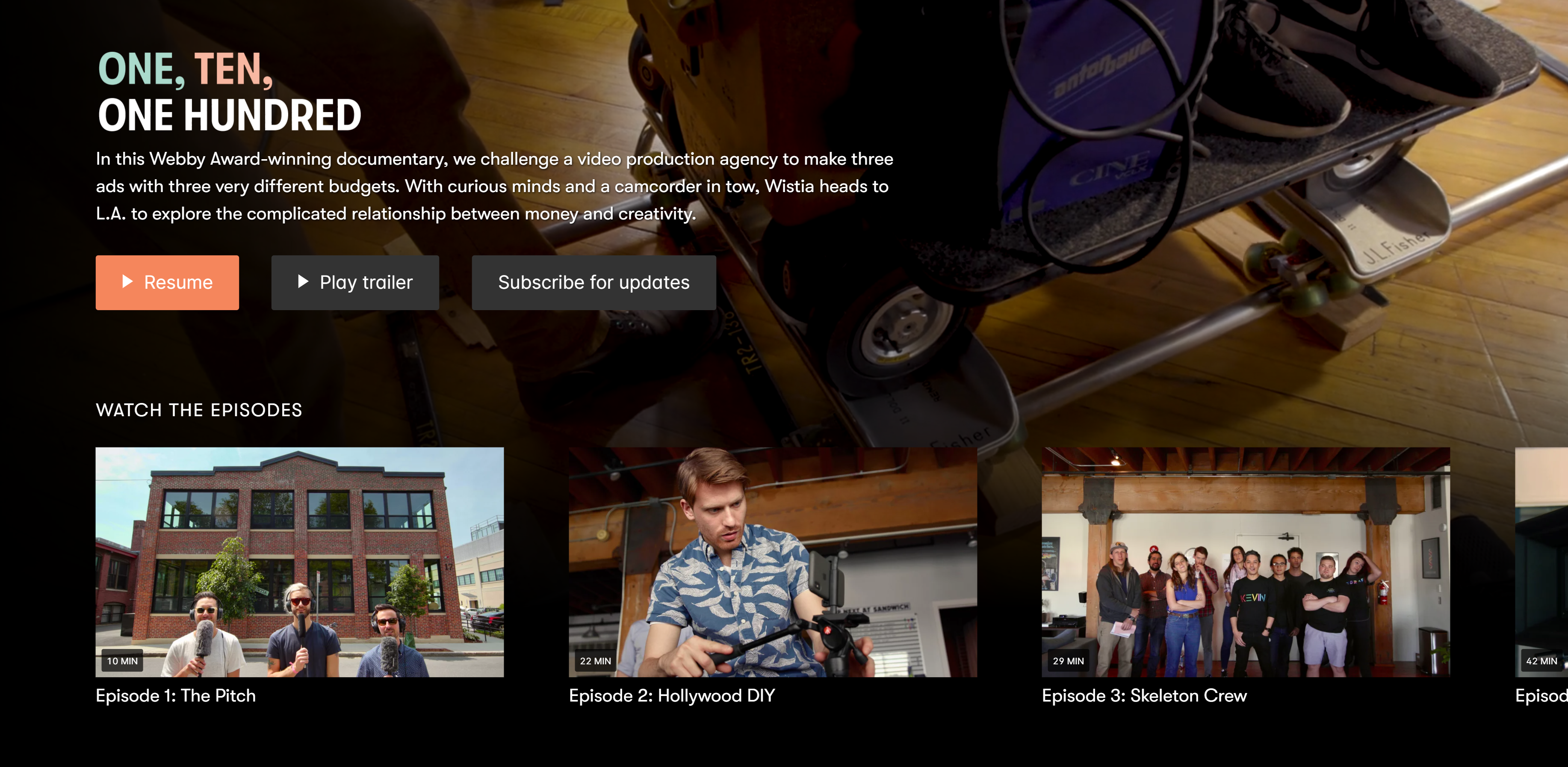- Home
- Blog
- Content Marketing
- Short-Form vs. Long-Form Video Content: Which Is Better for You?
Short-Form vs. Long-Form Video Content: Which Is Better for You?
-
 8 min. read
8 min. read
-
 Jessica Bonacci
Jessica Bonacci Multimedia Consultant
Multimedia Consultant
- Jessica is a Google Analytics-certified Multimedia Consultant at WebFX. She has created over 300 educational videos for the WebFX YouTube channel in the last five years, covering everything from the basics of digital marketing to more advanced data activation and AI usage. When she’s not researching and writing scripts, or bringing those scripts to life, Jessica manages the WebFX social media presence and engages with the WebFX audience. She specializes in video, content, and social media marketing but also loves SEO and many other aspects of digital marketing. When she’s not creating videos, Jessica enjoys photography, listening to music, reading, and catching up on the latest TV shows.
Short form vs long form video content:
Short form video content is typically brief and concise, while long form video content is more extensive and in-depth, allowing for a more comprehensive exploration of the topic at hand.
In the battle of short form vs. long form video content, only one can win…right? Well, not exactly.
Creating videos for your business is a tried-and-true way to boost engagement with your audience. In fact, it can increase conversion rates, email click-through rates (CTR), brand association, and audience engagement.
But the question isn’t if you should use either short-form or long-form video for your brand. It’s how you should incorporate both into your video marketing strategy.
Short-form vs. long-form video content: Definitions
The difference between short-form and long-form videos is simple: short-form videos are short, and long-form videos are long.
To be more specific, short-form videos are typically under 10 minutes long, while long-form videos exceed that 10-minute mark.
You’ll see a lot of short-form videos on social media (although you can use this format on other channels). Target, for example, uses this video format on Instagram to advertise its products.
You’ll typically see longer videos on a business’s website or YouTube. Video and podcast hosting provider, Wistia, uses long-form video to educate its audience about the cost of video production.
A brief history of video marketing
Since the early 2000s, video has exploded as a method for building relationships with audiences.
Back in 2005, for example, YouTube was just a small video dating site (yes, dating site). It was not the major video search engine and social media platform it is now. We didn’t have TikTok, IGTV, Reels, or a majority of the other video-focused platforms, either.
YouTube, however, is a perfect example of why mixing both lengthy and bite-size videos matters. Up until 2022, long-form YouTube videos were the way. How long people watch videos was (and still is) an important part of its algorithm.
Just look at the hour-long event videos Apple shares on its channel.
To compete with short-form powerhouses like TikTok and Instagram, YouTube launched its Shorts feature that limits video length to 60 seconds or less.

Now, YouTube creators and businesses alike benefit from sharing a mix of long and short content—all on one platform.
The wide array of video marketing channels means that your strategy needs to be flexible. Each platform—whether it’s YouTube, Instagram, Facebook, LinkedIn, or your website—has its own best practices for video.
Choosing to create either short-form videos or long-form videos isn’t really an option if you want your content strategy to be successful in 2025 and beyond. Both long-form and short-form videos have their place in your content plan.
Keep reading to learn more about each type of video content and when you should use them for your business.
Short-form vs. long-form video content: 5 factors to consider
With so many options, how do you know when to choose long-form video content over short-form video content (and vice versa)? You have several factors to consider.
1. Your audience
You can read every article that exists about what type of video you need, but ultimately, the choice between long and short-form videos depends on your audience.
You may find that on YouTube, your long-form videos don’t perform well, or on social media, you might notice more engagement with videos over the 10-minute mark. This would contradict the normally accepted practices to keep YouTube videos lengthy and trim your social videos down—and that is totally okay.
Your audience must like your videos, including their length.
Here at WebFX, we’ve seen success using a mix of video lengths, making sure to tailor the content to our audience’s interests above all else.
As an example, we created a digital marketing series for our YouTube channel that featured a roughly 30-minute video covering eight areas of marketing.
We then broke that main long-form video into smaller segments about individual subject areas and shared teaser videos on social media.
This series performed well, telling us that we don’t need to stick to one particular video length to be successful.
If you’ve created videos before, look at your top videos and make note of their lengths. If you notice that longer videos get more views, shares, or other engagement metrics, you may want to create more of those. If shorter videos get your audience interested, that’s the way to go.
Don’t stick to a certain video length because it’s what you’re “supposed to do.” Choose what works best for your audience.
2. Your video’s purpose
Knowing what you want your video to achieve makes your whole decision-making process easier. Is your goal to educate your audience and establish your business as an industry leader? Do you want to tell a story that drives your audience to act or show off your product to boost sales?
No matter what you want your video to do, having a clear purpose for it makes choosing the video style, format, budget, marketing channel—and, of course, length—so much easier.
If you know what goals you want to achieve, you can reverse engineer your videos to establish how much time you need to achieve them.
3. The type of video
The type of video you make greatly impacts its length.
An educational tutorial on how to install a sink, for example, needs more time to cover important information than a customer testimonial does. Just imagine trying to follow a tutorial that speeds through every step, or sitting through a testimonial that raves about a business for 20 minutes straight.
Not ideal.
Videos that work well in a longer format include:
- Documentaries (ex. Content Marketing Institute’s “The Story of Content: Rise of the New Marketing”)
- Event videos (ex. AtlanticLIVE’s event coverage)
- Tutorial videos (ex. Home Depot’s tile installation tutorial)
Videos that work well in a shorter format include:
- Product videos (ex. Dyson’s Lightcycle Morph feature)
- Culture videos (ex. Our Best Place to Work in PA recap)
- Customer testimonials (ex. Any of our client video testimonials)
While they serve as a quick guide, these lists are not set in stone. Home Depot, mentioned in an example above, does share tutorials that last longer than 10 minutes. However, they also publish tutorials that would qualify as short-form videos if you look at their YouTube channel.
Their content’s complexity and purpose have just as much of an impact on the length as the type of video.
4. Your budget
The budget factor may be the simplest of the five in this blog post.
The longer your video is, and the higher your production value, the more expensive it will be.
If you want to hire a professional team of video marketers to create a 20-minute documentary about the history of your business, you need to be prepared for a significant investment.
You’re not just paying for the video clips. Your investment covers the time and effort of the crew, the equipment, the edit, and everything else involved in the video process.
If you handle your videos in-house, you still need to consider the value of your team’s time and any video creation tools you use.
If you don’t have the budget for a professionally-produced masterpiece, use the tools in your pocket—literally.
Your phone can record great footage, and some social media platforms have editing features that let you trim and add effects to your video.
Social media platforms thrive on simple, user-generated videos, so don’t hesitate to produce content on your own if you aren’t sure you want to dive headfirst into something bigger.
5. Your marketing channels
Lastly, where you want to share your videos greatly impacts the decision of short-form vs. long-form video content.
As mentioned before, you can stray from the status quo when it comes to what type of content belongs on a certain marketing channel—but only if it works.
Some platforms set limits to how long your videos can be. At the time of writing this blog post, Facebook Reels duration is limited to just 90 seconds. Instagram Reels can only be 60 seconds long. TikToks have a 3-minute limit. LinkedIn videos are allowed a 10-minute maximum.
On those three platforms, you can’t post long-form video content (yet), no matter how much you want to.
If you’re using videos in your ads, you’re also limited by what the platform offers.
Make sure when you’re thinking about the duration of your videos that you first research the platforms where you want to share them.
The last thing you want to do is invest in a video that doesn’t work where you want to share it.
We post videos every Monday.
Yup. Every Monday.
Join the 12,000 marketers who get their marketing knowledge from WebFX videos.
Subscribe Now

Hire a team of expert marketers to handle the research and video creation process for you
Just remember that you can test different video lengths until you find what works best –– the sweet spot. Pay attention to your video performance and adjust until you see success.
And just because something worked for one type of video doesn’t mean it will always work. Your video marketing strategy needs to be flexible and adjust to people’s viewing behaviors for maximum impact.
To keep learning about video creation and all things marketing, check out posts on our blog about creating successful video marketing campaigns. Then join 200,000 subscribers by signing up for Revenue Weekly to get the latest tips and tricks for marketing your business!
-
 Jessica is a Google Analytics-certified Multimedia Consultant at WebFX. She has created over 300 educational videos for the WebFX YouTube channel in the last five years, covering everything from the basics of digital marketing to more advanced data activation and AI usage. When she’s not researching and writing scripts, or bringing those scripts to life, Jessica manages the WebFX social media presence and engages with the WebFX audience. She specializes in video, content, and social media marketing but also loves SEO and many other aspects of digital marketing. When she’s not creating videos, Jessica enjoys photography, listening to music, reading, and catching up on the latest TV shows.
Jessica is a Google Analytics-certified Multimedia Consultant at WebFX. She has created over 300 educational videos for the WebFX YouTube channel in the last five years, covering everything from the basics of digital marketing to more advanced data activation and AI usage. When she’s not researching and writing scripts, or bringing those scripts to life, Jessica manages the WebFX social media presence and engages with the WebFX audience. She specializes in video, content, and social media marketing but also loves SEO and many other aspects of digital marketing. When she’s not creating videos, Jessica enjoys photography, listening to music, reading, and catching up on the latest TV shows. -

WebFX is a full-service marketing agency with 1,100+ client reviews and a 4.9-star rating on Clutch! Find out how our expert team and revenue-accelerating tech can drive results for you! Learn more
Try our free Marketing Calculator
Craft a tailored online marketing strategy! Utilize our free Internet marketing calculator for a custom plan based on your location, reach, timeframe, and budget.
Plan Your Marketing Budget

Looking for More?
Get expert ideas, industry updates, case studies, and more straight to your inbox to help you level up and get ahead.
"*" indicates required fields

Proven Marketing Strategies
Try our free Marketing Calculator
Craft a tailored online marketing strategy! Utilize our free Internet marketing calculator for a custom plan based on your location, reach, timeframe, and budget.
Plan Your Marketing Budget
What to read next







